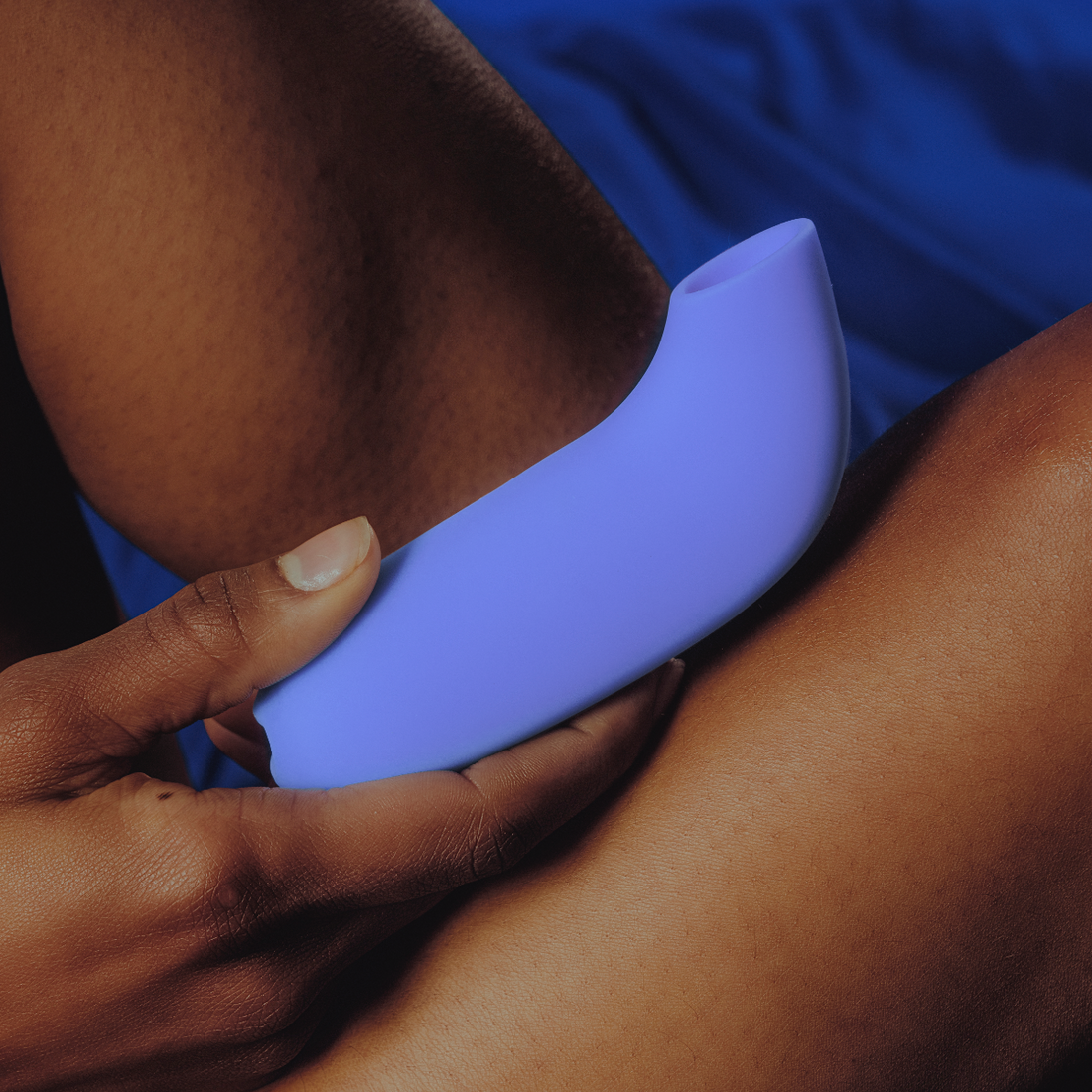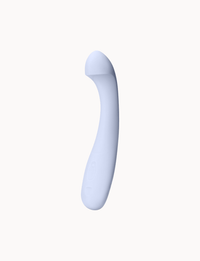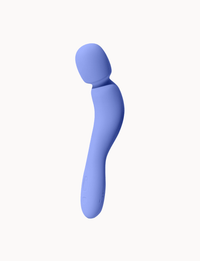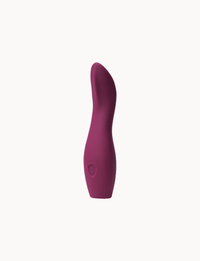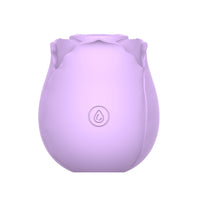“How to use a vibrator? You really have to ask? Turn it on, stick it in and go straight to Pleasure Town!”
Well, that’s certainly one answer.
It’s just not the right answer. That advice would be like teaching someone to drive with just two lessons: how to put the key in the ignition (or for many cars, how to push the ignition button), and how to put the car into “drive.”
To put it another way, vibrators are a wonderful way to put new life into your sex life – but only if:
- You understand what types of sexual stimulation and sexual pleasure you (and/or your partner) enjoy.
- You choose a vibrator or other sex toy that can provide that pleasure.
- You know what to look for, and avoid, when buying a sex toy.
- You’re willing to experiment – at least a little – to get the most enjoyment and satisfaction from your vibe.
Once you’ve checked all of those boxes, you’re finally ready to flip the switch and use your vibrator to “go straight to Pleasure Town.”
Let’s take them one at a time.
Understand Your Body
Many people with vulvas think of sexual stimulation as a binary choice: clitoris or vagina?
And those with penises may believe that intercourse and masturbating are the only paths to sexual satisfaction.
Leaving aside the fact that the anus would like to participate in this discussion, those approaches to sex leave a lot to be desired (if you’ll pardon the pun.)
The body is a playland filled with erogenous zones, and there’s no better way to explore them than with a vibrator. Before buying one, though, it’s a good idea to take inventory of the areas that tickle your fancy (sorry, again!), and the ones you might want to get to know a little better.
The Vulva
Clitoris or vagina? Even that seemingly-obvious choice isn’t quite as simple as it might seem.
Anecdotal and academic studies regularly show the same results although the numbers vary a bit: around one-third of vulva owners require clitoral stimulation to achieve orgasm, and another third say that it makes them more satisfied during penetrative sex. Fewer than 20% can climax solely with vaginal stimulation or intercourse.
So we’ll start with the clitoris. More accurately, we’re talking about the glans, the external part of the clitoris – which actually extends about six inches below the skin.
After the first time or two that you’ve played around down there, you certainly learned that different movements and motions feel quite different. You also may have learned that some parts of your glans are more sensitive than others, or that your glans clitoris is so sensitive that it feels better to touch the area above it (the mons pubis), stimulate the labia or clitoral hood, or even keep your underpants on when you play.
As you’re (hopefully) aware, the sensations you experience during oral sex can be quite different than during digital play. The flicking of a tongue may feel somewhat similar, but you might be turned on more by the sucking sensation, which is difficult to replicate.
Let’s move a little lower. “Fortunate” vagina owners may be able to get the satisfaction they need simply through vaginal penetration with fingers. Most, though, require deeper penetration which might include stimulation of the G-spot or cervix. And as we’ve mentioned, many also need or want clitoral stimulation at the same time.
For the Penis Owners
Don’t think we’ve forgotten about you. There are multiple erogenous zones in your genital area just begging for stimulation.
The head of the penis (the glans penis) is the most sensitive part of the organ because it’s home to the bulk of the organ’s nerve endings. But the foreskin (if you have one), shaft, frenulum (just below the head), scrotum and testicles are fruitful targets for exploration and stimulation, either on your own or with partners.
The Perineum and Anus
Some automatically say “ewww!” to anal play. Devotees say “don’t knock it until you’ve tried it!” But even if you’re somewhere in the middle, there are erogenous zones below the genitals which can provide great pleasure.
Anal penetration isn’t for everyone, of course, although it can make mind-blowing orgasms possible by stimulating the shared nerves between the anus, vagina and clitoris, or by stimulating the prostate in those who have one.
But even a buttocks massage, or play around the rim, can be arousing. And the perineum, the area between the genitals and anus (known as the perineal sponge on those with vulvas, and known as the “taint” to those who aren’t fluent in anatomy), is an extremely sensitive erogenous zone that many people are lucky enough to discover by accident.
But Wait, There’s More…
You may have shuddered in pleasure, or at least reacted with surprise, when a partner paid attention to a spot on your body you hadn’t previously associated with foreplay or sexual activity.
In fact, research has shown that most bodies have dozens of erogenous zones, located on virtually every area of the body. Some aren’t surprising, like the inner thighs, nipples (and areolas), belly button and lips. Others might be unexplored territory, like the inside of the knee, the palms and the scalp.
Why is taking this inventory so important before learning how to use a vibrator? Different styles of vibrators have been designed for very different regions and purposes.
Unless you buy a vibe made to properly stimulate the areas of the body you want to focus on, you may end up turning on a vibrator that won’t do a good job of turning you on.
Types of Vibrators
Those who are unschooled in the world of sex toys may think of a vibrator as nothing more than a vibrating dildo. Some vibes could indeed be described that way, but they’re only one of many choices.
We have to start somewhere, and “vibrating dildos” seems as good a place as any.
Internal Vibrators
Vibrating toys primarily designed to be inserted into the vagina are known as “internal vibrators.” They’re available in many different widths, diameters and shapes, but they’re most commonly shaped like cylinders and meant to feel (more or less) like a penis and to hit spots that fingers can’t reach. If you’ve wondered about the oddly-shaped internal vibrators that are tilted and slightly concave, they’re called G-spot vibrators.
Not all sexologists agree on the G-spot’s existence; there’s still a lot of debate among medical practitioners and PhDs about the so-called “female orgasm.” But there’s enough research to conclude either that it does exist – or that an awful lot of vulva owners all happen to be extremely sensitive to stimulation about 2-3 inches inside their front vaginal wall, where the vaginal canal and internal parts of the clitoris are very close together. A G-spot vibrator is designed to hit that elusive “spot,” and most dedicated users will tell you they do their job exceptionally well.
There are several other styles of internal vibrators. Perhaps the most popular is the egg vibrator (you can guess its general shape) which is smaller than the ones we’ve discussed so far. It usually comes with a remote control to make all types of fun sex games possible, both at home and out in public.
Internal vibrators don’t have to be used inside the vagina, naturally. The ones that are cylindrically-shaped are useful for stimulating most erogenous zones on the body, although they can be a bit awkward to use in some areas. They can even be used on the glans clitoris – but there are better choices for that purpose.
External Vibrators
Since there are many ways to tease, stimulate and pleasure the glans clitoris and its environs, there are a number of “external” vibrators, often called clitoral vibrators, to choose from.
- Small and discreet bullet vibrators are usually shaped like (yep, you guessed it) bullets. Some, however, have shaped or tapered edges to reach different sensitive spots or provide a different feeling, depending on which edge of the head you use.
- Magic wand vibrators are much longer and stronger, with a large, powerful head which can be used anywhere on the external genitals or elsewhere on the body.
- Split-tip vibrators have two vibrating tips separated by a space; they are used to “surround” the glans or other sensitive areas.
- Easy-to-carry finger vibrators like the Dame Fin slip right onto your hand to let you play virtually any time and anywhere.
Combination Vibrators
The best-known combination model is known as a “rabbit,” although many toy companies sell these vibrators in slightly different styles and shapes. Lovehoney even sells a mini-rabbit.
The reason rabbit vibes are so popular is that they essentially perform the functions of both external and internal vibrators. The shaft is designed for vaginal penetration, with many shaped to provide G-spot stimulation as well. On top of the shaft is an attachment that looks sort of like rabbit ears, which provides clitoral stimulation at the same time. If you use the toy properly – and perhaps, if you’re a little lucky – you can use it to achieve what’s politely called a “blended orgasm,” or less politely called “coming outside and inside at the same time.”
A variation on the combination vibrator features three heads, so it can also stimulate the anus. You can also find combo vibes for penis owners, which hit the anus, scrotum and perineum at the same time.
Other Types of Vibrators
You might call these “specialty” toys, but that wouldn’t be fair to those who favor the types of stimulation the vibrators provide.
- Anal vibrators: These are similar in structure to internal vibrators, but slimmer and built with a flared base (so they don’t get stuck inside).
- Suction vibrators: Earlier, we mentioned the sucking sensation often integral to oral sex, and that it’s difficult to replicate. In truth, vibrators like the Satisfyer Pro and the Lelo Sona Cruise are built for that exact purpose, since they suck rather than vibrate.
- Vibrators for penis owners: The most common choices are vibrating cock rings and prostate massagers (inserted into the rectum), but even the vibrators mentioned above can be used to produce amazing sensations virtually anywhere.
What to Look For – And Avoid
It goes without saying that the first feature to look for on a vibrator is vibration. Some inexpensive models have just one or two speeds; some top-of-the line vibes have more than a dozen. You’ll also find that many vibrators do more than just “shake.” Thrusting and/or pulsating internal vibrations can better simulate the feeling of penetrative sex, and some external vibes have pulsing functions or intermittent vibration patterns to vary the experience. Deciding on the right vibrator can partially depend on how experienced – or adventurous – you may be.
Vibrators are made from many different materials.
The best choices are non-porous substances like silicone, stainless steel or ABS plastic (silicone is softest and the best for internal vibes), because bacteria can’t become trapped in them and they’re easy to clean. Porous materials like PVC, thermoplastic rubber, and jelly rubber (not used much anymore) may feel softer – but are more likely to retain bacterial and cause infections. A good middle choice is latex, which isn’t as porous and feels better than steel or plastic during penetration.
Other choices you’ll have include:
- Smooth or textured outer skins – this is primarily a matter of personal preference.
- Size and shape – not only does this play a role in a vibrator’s ease of use, but it determines whether you can target a large area or a smaller one. In addition, a large surface area spreads the vibrations out more so they’re usually not as strong.
- Power – most vibrators are now rechargeable, but some less expensive models run on disposable batteries and a few like the magic wand may have to be plugged in.
- Waterproof – if you’re going to be taking your toy into the shower or the swimming pool, look for one that’s waterproof, or at least water-resistant.
- Bells and whistles – we’ve mentioned egg vibrators with remote controls; some vibes also are controllable via an app, for even higher-tech sex play.
How to Use Your Vibrator
One of the beauties of sex toys is that there’s no “right way” to use them. If they’re providing pleasure (and you’re not doing anything dangerous, of course) – it’s the “right way” for you.
However, here are some suggestions on getting the most pleasure from your new toy.
- If your vibe has selectable speeds or functions, experiment with all of the different settings. You never know what brand-new sensations or feelings you might experience. Try using different angles and varying amounts of pressure, too.
- You may want to play around with orgasm control, also called “edging,” by bringing yourself close to orgasm and then pausing a bit before resuming. It’s easier with a vibrator than with a partner.
- Don’t stick to the tried-and-true genital areas; the body has dozens of erogenous zones, and vibrators can be used on most of them. You could find brand-new sexual horizons you’d never imagined. And if you’re embarrassed to try using your vibe on your nipples, thighs or neck, just do it before you masturbate, rather than with a partner. The vibe will keep your secret until you’re ready to reveal it to someone else.
- Speaking of partners, some of the most satisfying sexual experiences are shared ones. Whether you’re using a vibrator on the other’s person’s body, trying mutual masturbation with toys, using something like the hands-free Dame Eva II which fits under the labia for clitoral stimulation during penetrative sex, or even using a vibe which can stimulate two people at once (they do exist!), you can reach a new level of mutual pleasure by sharing. (Just be sure to clean the toy before trading it unless you’re already “fluid bonded.”)
- Cleanliness is always important. Clean your vibrator with soap and water after each use, and store it where it won’t come in contact with other toys that might carry germs.
- Don’t forget to use lube when necessary. Not only will it help with lubrication, but it will absorb some of the vibrations and make your playtime last longer.
(1) https://www.tandfonline.com/doi/abs/10.1080/0092623X.2017.1346530
(2) https://www.ncbi.nlm.nih.gov/pmc/articles/PMC5087699/
(3) https://pubmed.ncbi.nlm.nih.gov/27091187/
(4) https://pubmed.ncbi.nlm.nih.gov/23993282/
(5) https://pubmed.ncbi.nlm.nih.gov/22240236/
(6) https://pubmed.ncbi.nlm.nih.gov/25740385/


